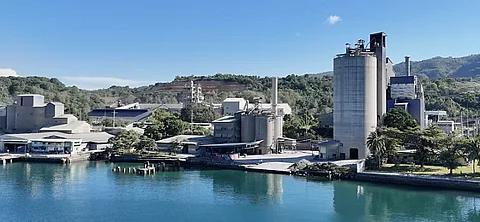
- NEWS
- the EDIT
- COMMENTARY
- BUSINESS
- LIFE
- SHOW
- ACTION
- GLOBAL GOALS
- SNAPS
- DYARYO TIRADA
- MORE

Local cement players were unanimous in saying they had suffered significant revenue losses due to the entry of cheap imported cement products, particularly from Vietnam.
During the second day of the Tariff Commission’s hearing on the formal probe to impose a definitive safeguard duty against importations of Ordinary Portland Cement (AHTN 2022 Subheading No. 2523.29.90) and Blended Cement (AHTN 2022 Subheading No. 2523.90.00), representatives from Holcim Philippines, Republic Cement, and Concreat Holdings Philippines presented evidence of financial damage caused by the influx of imported cement.
Counsel for the oppositors, representing cement importers, focused their questioning on selected excerpts from press releases, company websites, and audited financial statements of local manufacturers to suggest that the domestic industry had not suffered material injury — or that any injury was not caused by the surge in imports.
Holcim Philippines’ Strategy Manager, Maria Isabel Cleto, was asked whether the company posted a P1-billion profit from January to September 2023. She confirmed the figure but emphasized the need to assess year-on-year performance and the company’s bottom line.
“Our EBIT (Earnings Before Interest and Taxes) also showed a declining trend over the POI (period of investigation) because of the surge of imports affecting our sales volume,” Cleto stated.
Republic Cement President John Reinier Dizon was asked whether their production costs had increased significantly from 2022 to 2023, implying internal factors contributed more to the losses than import competition.
Dizon clarified that the increase stemmed from the company’s efforts to expand delivered sales and enhance product safety — costs they were unable to recover due to price suppression caused by imports.
“While we advocated for safer and more reliable delivery methods, the influx of low-priced imports prevented us from fully selling and passing on these costs to the market,” Dizon stated.
Trizia Mistica, Industry Manager of Concreat Holdings Philippines, was also asked whether the company’s expansion was simply a continuation of past plans. Mistica countered this, saying their current measures were driven specifically by import-related challenges.
“We are undertaking these measures to address our main concern, which is the surge of imported products,” she stressed.
Questions also arose regarding the industry’s sustainability efforts, particularly compliance with Republic Act No. 11898 or the Extended Producer Responsibility (EPR) Law.
Importers’ counsel attempted to downplay these efforts as routine business practices or legal obligations. However, CeMAP members said their environmental initiatives go beyond regulatory compliance and are strategic responses to the financial pressure brought by imported cement.
“These efforts are not only about environmental responsibility—they are also cost-reduction strategies necessary to minimize the injurious effects of the import surge,” Dizon said. “Aside from 100 percent compliance with the EPR Law, domestic players like Republic Cement are going beyond the mandated plastic recovery targets.”
CeMAP and local manufacturers reiterated their commitment to present an accurate picture of the industry's current challenges and to advocate for fair competition and national interest.
“At the end of the day, we are all after the same thing — and that is the truth. We are more than willing to share that truth with everyone,” Dizon said.
